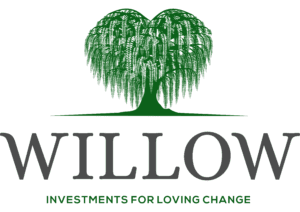Market Update + Q&A for October 2021
See below for our October Market Update + Q&A. Summary points below the video.
Market Update & Q&A Video Summary (October 2021):
- Our leading economic indicators give us an indication of how growth is going to look six months forward. At the onset of COVID, the LEI went down significantly and then rebounded. Over the past few months, it came back down, but it is still showing growth.
- The University of Michigan did a survey on the health of the consumer, which is a big part of the leading economic indicators. These numbers have continued to drop since the beginning of COVID, which is pretty significant. This shows the confidence that households have in buying goods. Part of it may be that we have to wait longer for appliances, but we’ve also seen a parabolic move in prices since COVID and since the revamp at the beginning of this year. Prices we haven’t seen since 2008. This is important because when prices go higher, usually that starts to crimp the consumer, and thus we see a slow down. Also because of this, the Fed has been talking about transitory inflation. We personally believe it isn’t transitory, we think it’s a direction we’re heading in, hopefully not to stay.
- Wages have been going higher, which is good news for the consumer and the individual, but companies are concerned about the prospects for the future as it’s harder to find a pool of employees to pull from. Companies are starting to feel that stress. Housing is starting to show a slow down as prices continue to go higher. This is definitely inflationary. Factory orders are still strong, which is a positive for the leading economic indicators. Interest rates have been going in a downward direction for the past three to four decades. Through COVID, we’re still at very low levels. The Fed has stopped some of the bond buying and since that, you see a lot more churn in the equity markets and a lot more volatility than what we’ve seen over the past year. Unemployment rates have also dropped.
- For our risk indicators, we are seeing the credit default swap spreads slightly starting to elevate in this high yield area. Not enough to create any concern at this point. The volatility risk indicator, which is our own risk indicator that we use here that’s based on about 50 different metrics, is still relatively low. Corporate bond spreads are showing a tick up in high yield, and there is a slight tick up in all bonds. We’re going to keep watching these indicators.
- During our last webinar, we talked about what keeps us up at night. Power consolidating to the top, higher debt, supply chain disruption – which is probably one of our biggest concerns–, stagflation and the net effect of that, which we think could lead to civil unrest. About 45% of the wealth worldwide is held by 1.1% of the adult population, 39% of the wealth is held by 11% of the population, and if you break it down even further, 0.1% holds 90% of that wealth. This consolidation is a concern because the more consolidation to the top, the more control they have on pricing power, which can create instability in the long term. The increase in national debt is also a concern because this is going to push inflation higher. Supply disruption around the globe is also a concern, from not being able to get chips for cars to grocery store isles starting to show holes. This is a trend that we hope reverses as it can become destabilizing.
Questions from Q&A
- “Historically, rising oil prices may foretell or cause recessions. Do you believe that costly energy is a real headwind to the US and the global economy?”
- “The US dollar has rallied and gained nearly 1% over the last 12 months. Do you feel that a strong US dollar seems unlikely given the recent conversations about debt ceilings, inflation and supply chain snafus?”
- “Did the September employment report indicate an inflation signal more than a labor market signal?”
- “As stock pickers, do you continue to focus on company specific fundamentals and the impact of higher corporate tax rates?”
- “What potential companies are you considering for portfolio investments, which will benefit from new infrastructure spending?”
- “What is the target percentage of the portfolio to be held in cash?”
- “Does the recent downtrend of the market signal a bear market, or even start of a major market correction?”
- “Stay in cash, where to achieve at least some low returns safely?”
- “As you lighten up on equities, where are you reallocating? What less volatile assets are you’re favoring?”
- “Do we stock non fresh food, toilet paper, olive oil, staples, and so on?”
To set up a meeting, please click here or give us a call.
Best regards,
The Willow Team
+1 413 236 2980




